Product Development Strategy — Key Stages and Examples
Why does product development strategy matter? According to the Harvard Business School survey, the biggest problem faced by entrepreneurs at the launch is the lack of preparation. At the same time, 42% of shutdown startups offered services of gadgets that actually didn’t solve current user problems.
That is, preparation and strategy are obligatory for your success. In this article, we’ll figure out what a product development strategy is, its key stages, and examples.
What is Product Development Strategy?
Let’s begin with the product development strategy definition. It is one of the basic approaches focused on offering new or updated products to market segments that you have already mastered.
A strategy for product development includes different actions for the gradual development of a new product or improving the effectiveness of an existing one. It is a plan that can include brand architecture and identity, customer service, business model, design, features, market niche, pricing, promotion, risks, and so on.
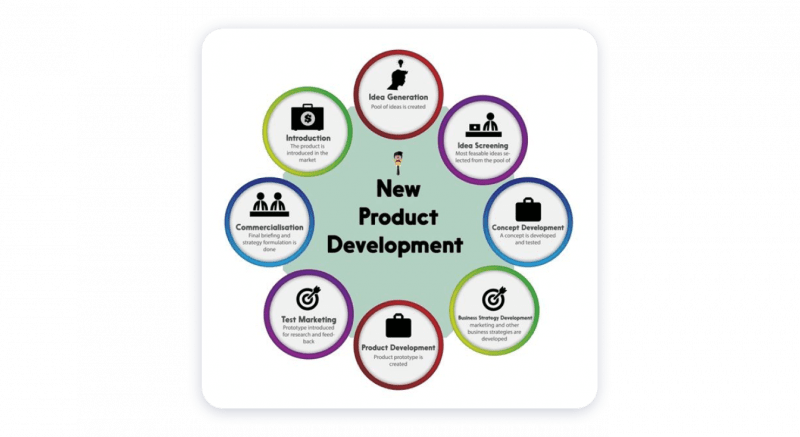
Why Product Development Strategy Matters?
The creation of any project must be based on a product development marketing strategy. You should clearly understand what you are doing and why.
When choosing a product development and marketing strategy, you think over all the methods and techniques that you will use at all stages. This way you can think through all the problems in advance and find the most successful new product development strategy in marketing. Also, strategies can help you make existing projects better, discover new niches, etc.
A product planning and development strategy is the basis of its life cycle. If you want to build a reliable and successful product development growth strategy, pay attention to its aspects: vision, goals, ideas, and initiatives.
- The vision includes market opportunity research, positioning issues, target audience, competitor analysis, etc. It describes your customers’ needs and the ways to meet them.
- The goals must be clear, relevant, measurable, and time-specific. You should define what results you want to achieve in a certain time frame.
- The ideas and initiatives are efforts that you need to achieve your strategic goals. For example, improving the user interface, optimizing performance, and more.
New Product Development Stages and Marketing Strategy
A product development strategy is divided into 5 stages:
- development of the idea itself;
- prototyping;
- analysis;
- market testing;
- commercialization.
Below we will focus more on a marketing strategy of new product development, as marketing plays the key role in any business.
Stage 1: Marketing Research and Testing
Your main goal is to make your users satisfied. Therefore, you should learn more about your clients and their pains.
Find answers to these questions at this new product strategy development stage:
- What is the purpose of your project?
- What are your product’s basic features?
- What customer problems will it solve?
- How does it differ from your competitors’ offers?
Also, product testing by real customers is useful at this stage. You can ask a small group of target customers to get acquainted with your prototype. Then collect their opinions and analyze them. This will help you improve your product-development strategy according to the real user experience.
Stage 2. Tell About Your Product
Once the focus groups have tested your offer, and you have made changes to your product and service development strategy, it’s time to launch a landing page. Add the ability to subscribe to your updates for interested users and come up with a lead magnet. It is something your users will get for leaving an email or phone number. For example, you can send them free samples or offer a discount on their purchase, and so on.
Create your landing page (your company’s online business card) on Weblium in just a few hours. Use our beautiful templates or create website from scratch with ease. With our simple interface and a huge variety of integrations, you can customize your site the way you want. You can also track your visitors with built-in analytics of Google Analytics, chat with them right on the site for higher conversions, chase them with tasty offers using Facebook Pixel, collect their data using lead magnets and contact forms, send automated emails and a lot more!
And remember, the sooner you create a website, the more people will know about your business. Which is highly important for you, huh?
Create Landing
Stage 3. Set Goals and Budget
Product development and strategy require planning ahead. You need to understand what goals you plan to achieve in the short and long term to define product development strategy. Also, plan your budget for each marketing channel and product development stages. You should understand how much you will spend in order to calculate the cost of your project and stay within the budget.
Stage 4. Marketing Support
As we said above, without comprehensive marketing activities, even if you have the most innovative and interesting project, nobody will learn about it. Your new product strategy development should include channels that are effective for you.
Think about how you will share information about your offer. Will you be shooting educational videos, writing blog articles, developing your social media profiles, or reaching out to bloggers? Or maybe your path is offline marketing? (Which we don’t really recommend since it’s way too outdated in 2020.)
You should consider these questions and come up with a clear plan of action.
Stage 5. Implementation of Product Development Strategy
It is important here to ensure that all stages are implemented in a timely manner. We also advise you to track your results. For example, the simplest thing you can do is connect Google Analytics and Facebook Pixel to your Weblium site. This way you can see where your users come from and how they interact with your site, and whether or not they are interested in your offer.
Be sure to keep track of how well what you are doing matches the original plan and make changes if necessary.
Top 5 Product Development Strategy Examples
Well, we have figured out what a product development strategy is and what it consists of. Let’s now take a look at how these strategies are actually developed and implemented by large companies. You can look at some of the best examples of product development strategy below.
Mcdonald’s Product Development Strategy
You might say, “Why would I look at McDonald’s if it’s a giant company and I have a small business?” But it’s worth learning from the best, and if you look at McDonald’s product development strategy example, you will see many interesting tricks that any company can use.
- Traditional dishes. McDonald’s always has several dishes on the menu that do not change. For example, their classic hamburger and cheeseburger, the Big Mac, and so on. This is how McDonald’s works with conservative consumers.
- Seasonal dishes. At the same time, McDonald’s often introduces seasonal offers on the menu. Some of them appear from year to year, others were on the menu for only a few weeks and disappeared forever. This way, McDonald’s satisfies the demand of those who like to try something new and tests new dishes at the same time.
- Localization. In addition to the usual menu, McDonald’s introduces regional dishes or prepares classic burgers taking into account local specialties. For example, in India, the Big Mac is made without beef. In the Netherlands, there is McKroket on the menu with a local Dutch kroket.

Google New Product Development Strategy
Google is constantly working on new services and gadgets. Some of them become successful, some are shut down. Here are the basic principles of a new product development strategy at Google:
- A smart culture where innovations are in nobody’s job title, everyone at Google is responsible for them.
- Early launch to get user feedback. Google creates its services for end users, not for profits.
- Launching a large number of projects at once. Out of 5 new products, at least 2 are sure to be successful.
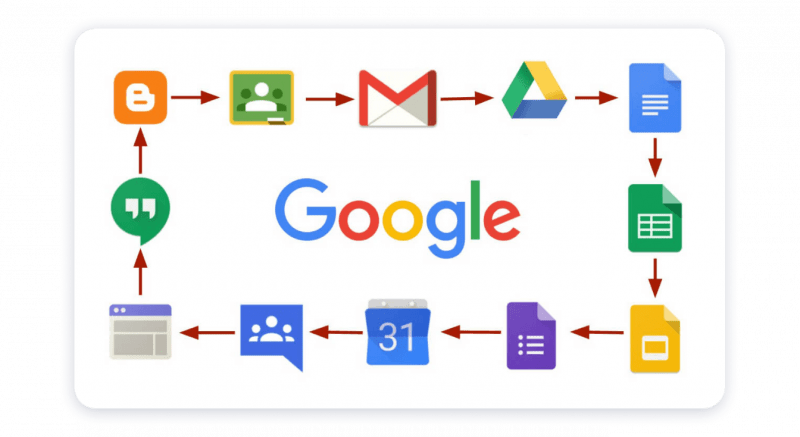
Product Development Strategy Ansoff
Now let’s take a look at the academic approaches. Igor Ansoff’s model was first presented in 1957 in the Harvard Business Review. Today, this matrix remains the most common strategic management tool for determining the directions of business growth.
Igor Ansoff in his “product-market” model identified 4 possible business growth strategies:
- Market penetration strategy means increasing the share of the current market.
- Market development strategy means developing demand in new markets.
- Product development strategy means increasing demand for new products.
Diversification strategy means renewing the product line and entering new markets at the same time.
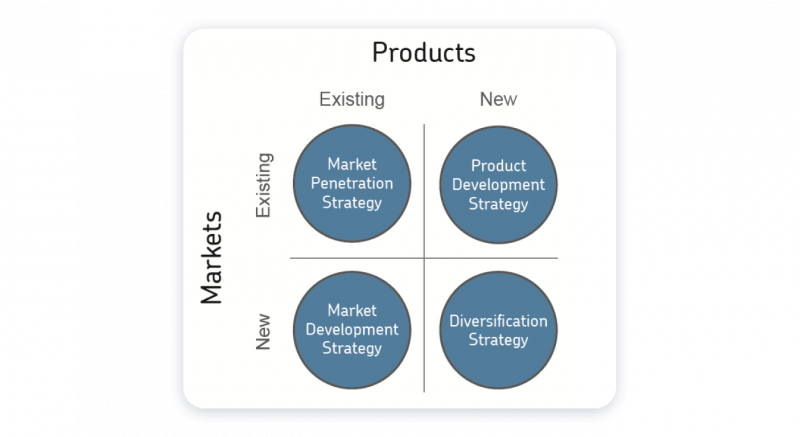
Microsoft Product Development Strategy
Microsoft may not make headlines as often as other IT giants. This company is relatively quiet doing its job, releasing services that each of us uses both at work and in everyday life.
In general, Microsoft has three main focus areas:
- Productivity & business processes.
- Intelligent cloud.
- Personal computing.
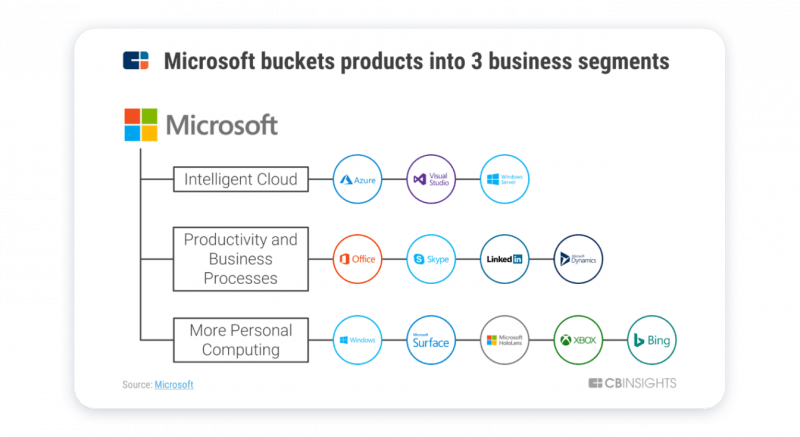
For each direction, the following steps are used:
- Idea screening.
- Concept development and testing.
- Marketing strategy development.
- Business Analysis.
- Manufacturing.
- Commercialization.
Microsoft is well aware that even a well-tuned strategy doesn’t always lead to success. For example, the Microsoft Mixer service, in which a lot of money had been invested. However, it could not compete with Twitch and was forced to shut down.
Here’s what you get out of this story: not all projects of even giant companies are successful. It’s okay to be wrong. But a proper strategy helps to minimize the risks.
New Product Development Strategy of Samsung
You might not know but Samsung was once just a local company with little consumer demand. But building a strategy, including a powerful marketing strategy, has brought Samsung to where it is today.
This company is expected to create innovative gadgets constantly, and for this purpose, Samsung has developed the New Concept Development (NCD) process. It involves the following stages:
- Understand current trends.
- Generate and discuss ideas.
- Develop concepts.
- Finalize concepts.
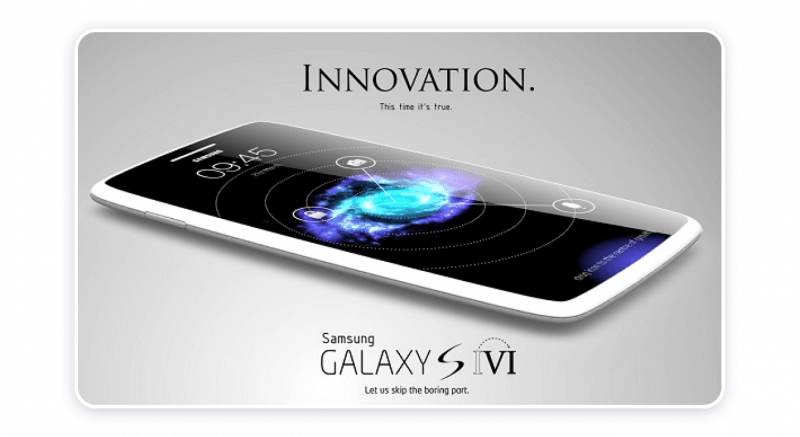
Summary
As you can see now, a product development strategy is a must for any company. A proper strategy allows you to think over all the nuances in advance and protect yourself from problems. It helps you understand what your product is, what its strengths and weaknesses are at the earliest stage.
In addition, product development strategy always includes marketing activities. This is one of the most important points because, without marketing, no one will know about your offer.
Therefore, as soon as you have decided on an idea, create a website on Weblium, write to blog and social networks, and spread information about what you create.
It will not take you much time or money but together with a well thought-out strategy, it will successfully bring your product to market.
Create Site
FAQ
What is an example of an innovative product?
An innovative product is a product that is fundamentally different from other existing products. For example, robotic vacuum cleaners. They are an absolute innovation on the market which has no analogs.
What’s a product development definition?
Product development is a process from product creation to its launch. This can be either creation of a new item or an up-gradation of the existing item.
What is product development?
It is the process of creating a product, from an idea to its implementation.
What are the two ways a firm can obtain new products?
It can be acquisition – you can buy an entire company, a patent, or a license to manufacture a new product. Or you can develop a new and original project yourself.
How to create a product innovation?
Think about who your target audience is and what its pains are. Then think about how you can solve your users’ problems. Don’t be afraid to generate even the craziest ideas. Then analyze them from a business perspective and prioritize. In the end, you will have a few ideas that are worthy of implementation.
Related articles:
Wireframe vs Mockup vs Prototype: What’s the Difference?
Marketing Basics 101: 4 Important Lessons for Small Business
Digital Marketing Hacks to Boost Your Sales